It can be difficult to grasp the scale of Edward Burtynsky’s subjects when there are no points of reference — no recognizable objects, intentionally no humans, and sometimes no horizon. Your understanding of what you’re looking at changes between close proximity and several steps back. Sometimes it’s better just to wonder, because comprehending the vast scale of a field of oil drilling rigs, Alberta’s oil sands or a coal mine in BC can take the wind out of you — at least, if you’re as affected as I am by these visuals. I left feeling pretty drained as it’s emotionally taxing to look at how we’ve shaped, polluted and destroyed the landscape of our planet to meet ever-growing needs. Not everything in the Vancouver Art Gallery’s exhibit of Burtynsky’s work was dark, but a bleak image of a massive pile of tires (at a distance, just a huge wave of black) burning after a lightning strike had me reeling and thinking, “what have we done?”
“In Burtynsky’s vernacular, the ‘manufactured landscape’ is no longer a simple contest of nature versus culture; instead his images suggest an emergent condition in which the natural world has been fully consumed, never to reappear again.” — Vancouver Art Gallery
I was standing in front of a large format aerial photograph of a Scottsdale, Arizona suburb when the woman next to me said, “this is the scariest one.” I don’t know if she’d been to the other side of the exhibit yet, but I understood what she meant. A rectangle of desert with a road around its perimeter marks the Navajo reserve, abruptly divided from suburbia, which is the usual unsustainable pattern: tendrils of cul-de-sacs, single-family houses — many with pools — tennis courts, and trees, all supported by a dwindling water supply. Far, far in the distance one can see a few towers in Phoenix, an unpleasant highway commute away. Now that I have time to absorb it, the connection between this and the rest of the exhibit is clear: the activity documented by Burtynsky feeds this horrific exercise in “community planning.” Artificially cheap oil, mining coal and metals, irrigating the desert — it’s all to feed an insatiable appetite called the American Dream.
I’ve been working for months on various campaigns working to shift away from Canada’s large-scale, rapid energy extraction, consumption and export economy, and toward green energy and jobs. Our opposition is wealthy and determined, and the media not always kind. Exhibitions such as Burtynsky’s, or similarly Chris Jordan (on consumption and waste), help to bring a real-life tangibility to what corporations and consumers are doing. It’s up to us to fight for the alternatives, and to be reminded of the ways in which we can meet reasonable needs responsibly.
To that end, here are a few ways you can get involved:
Sign the pledge to push for a fair, province-wide vote on oil pipelines and tanker traffic in BC
100 in 1 Day, Vancouver edition — multiple workshop dates culminating in 100 urban interventions on June 7th each in Vancouver, Toronto, Montreal and Halifax
CanRoots, May 23–24
10th anniversary screening of The Corporation, May 26th
The Edward Burtynsky exhibition at the Vancouver Art Gallery ends May 26th.
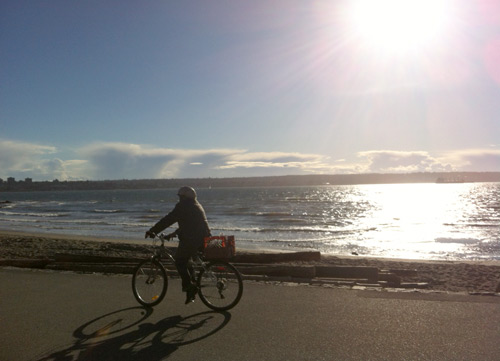
This is not me.
On Monday, a sunny day with a strong wind, I left a meeting with my new life coach close to five. I felt at once an obligation to head home — an internal guilt trip — and a desire to feed my bicycle-addicted brain. I was downtown already and compromising:
“You can’t go ride the seawall right now. You have things to do.”
“Like what? There’s nothing important to be done when I get home at 5:30.”
“I don’t know, you just need to go home. … Okay, you may take the short scenic route.”
“It’s a little farther but worth it.”
It took me awhile to relax and give myself permission to feel like I was free for the evening, that I didn’t need to go home and work.
Continue reading Shut up, work brain. I’m going to enjoy a bike ride. »
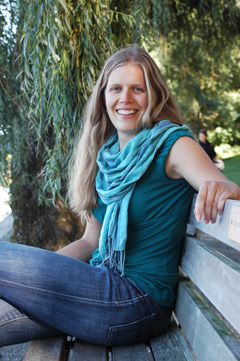
I’ve always cared a lot about our planet. I was the kid asking other kids not to dig all the clay out of the creek bed at our elementary school. I’ll never forget coming home from a trip at age nine to find a forest off the main road gone. Or at age ten seeing clearcut mountains on the way to Tofino. It hit home for me. I understood the issues. After all, this was the age of Captain Planet. But I think kids generally “get it.” I never understood why people litter (because garbage magically disappears, right?). I stomped on tin cans a lot to recycle them and was brought up to not waste food. I have an obsession with trees that’s visible in my drawings going back, well, forever.
Continue reading Designing for good: why I do what I do »
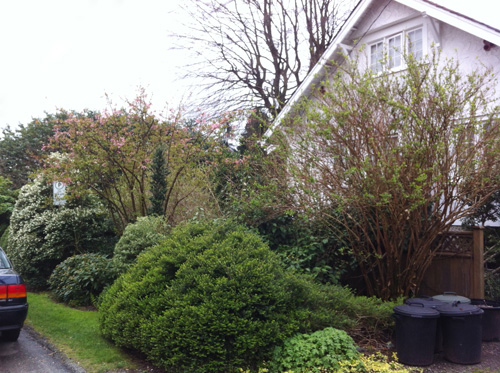
On the weekend I attended a vegetable gardening workshop at my local urban farm, hosted by the lively farmer, Gavin. It was an informative session on seed starting during which I figured out why my tomato seeds hadn’t germinated. He took the small group of us on a brief tour afterward and had funny (if not sometimes tragic) stories to tell about the arugula (sown somewhat erratically by a teenager and now bursting with leaves under the tent) and disappearing carrots (slugs are voracious). It’s only half an acre — tiny compared to UBC Farm‘s 60 acres. But my hope is that this small model of local, urban agriculture will get people excited to grow more food in their backyards, or on their balconies, and support future urban agriculture projects in the community.
Continue reading Gardens great and small »
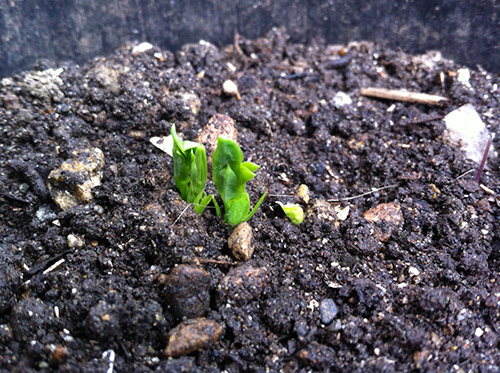
Seeds in the soil,
I wait, hoping conditions are right for germination.
Rockets and green zebras sprinkled in egg cartons.
A light on in the oven to warm them.
Is it too warm?
And I let them dry out.
I wait for little plants to sprout,
for tiny leaves and stems to tell me,
congratulations.
You did it.
This is me learning, tempering my ambition.
I will be tending to gentle life,
Springing forth from fertile soil.
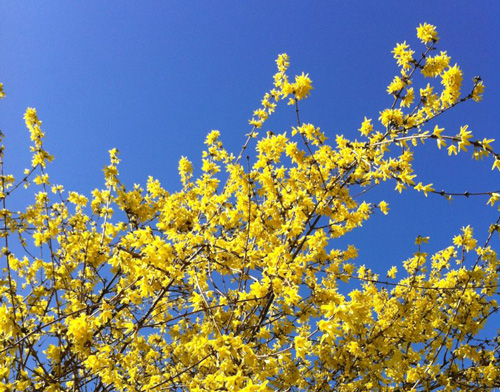
Away for the warm weekend,
I returned home,
peeked outside and a joyful smile
exploded on my face.
Three tulips whose colours were previously unknown
bloomed in hot pink, hot pink and yellow, hot pink and white
in varying shapes and scents.
“I love them!” I exclaimed.
And across the street, the tree that has always looked beautiful
was topped with a bounty of magnolia blossoms
with more to come as they open in a cascade downward.
The willow is greener from afar, its tiny fledgling leaves glowing in the sun.
A forsythia I never knew was there reaches for the sky.
I wait for the other trees outside to leaf out.
Is that a pea sprouting in my garden?
Garlic scapes grown taller while I was gone.
My first spring in my new home
delivers me all kinds of sweet surprises.
I’m attempting to participate in NaPoWriMo, National Poetry Writing Month.

I know it’s spring
when the air is fragrant —
cherry blossoms and ocean breeze,
freshly cut grass,
plants breathing
the sun seems to have sprung
higher in the sky.
those little unknown seedlings that over time will take shape,
slowly growing and unfolding into — ah! — whatever they become.
home smells new, with the
scent of warmth and life.
short sleeves and bare feet,
soles dirty from the grass and garden.
shadows, still long, appear for a longer day.
it’s time to put toques and scarves away.
(at least on the West Coast.)
winter has passed the torch of time to spring,
to light up the daffodils, tulips and magnolia,
the hyacinth, camellia and forsythia,
and others the sun is still beckoning.
I’m attempting to participate in NaPoWriMo, National Poetry Writing Month.

In the fall, I planted four garlic cloves and crossed my fingers. The soil had been used already for tomato plants and I didn’t have much compost left, so I added coffee grounds and watered them occasionally when I remembered. Talk about neglect. To my utter delight, I recently noticed two of them growing and wondered if the other two — which are closer to the wall where they’d receive less of any rainfall that made it that far — would appear. Sure enough, there they are!
Continue reading A winter garden »
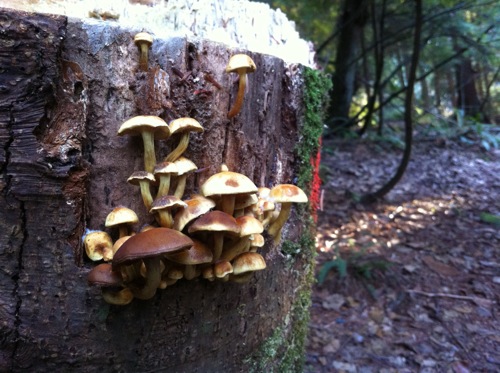
Mushrooms sprout on a nurse stump
I’ll never forget the first time I visited this park in my new neighbourhood, three years before I moved here. It was March and it started snowing! Between the wild, jagged terrain and the owl appearing in the tall conifers, it left an impression almost more idyllic than my experience of it now.
In the warmer months, one particular path that begins at the street is muddy, almost creek-like. Riddled with stones and pebbles, it’s hard to traverse when it’s so wet and is slightly uphill. Yesterday it was hovering around zero degrees and the pseudo-creek bed was blanketed in ice! It looked like a tiny, frozen river.
Continue reading A wild park »
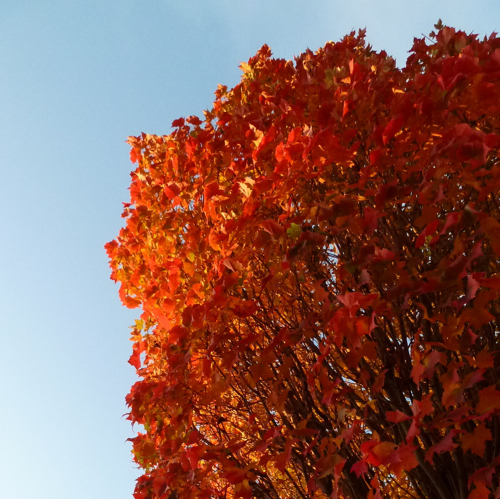
Swishing through a bed of leaves in Kitsilano reminds me there’s nature in the city, but it’s still difficult letting go of the dense, unique nature around the home in which I grew up.
It’s dark when I get home from work now. I get to my street, and it’s like I’m at the edge of the wilderness. There’s only one street below mine on the hill as it slopes down into the water. From street level you can’t see the lights across the inlet. Those lights are what make the darkness borderline between oppressive and refreshing. There’s just enough of them, and at Christmas everyone lights up their docks and boats.
Moving was easy the first time. I don’t know why — I should have been more emotional about it since I didn’t intend to move home again. I did two years later; I’ve been here again for over three. I’m glad of it though: being in my mid-twenties — a mature adult, one might say — I’m aware of my surroundings in a more intimate, celebratory, pensive way, where I revere and require the nature around me. I would have missed out on this if I hadn’t moved back.
I know it will be harder the second time. I remind myself that I will be excited about the prospect of having my own place. It’s more complicated now, and yet easier: I plan to buy an apartment not solo but with my sweetheart, once his current place is ready for the market and we’ve had more time to know each other. The only disadvantage of this co-purchase is timing, since we’re in agreement about having a bright place near a farmer’s market and a bike route, close to nature. (Too bad Trout Lake is a lofty dream.)
But as we’ve been talking about it more, I’ve been thinking more seriously about the prospects. Oh, not regretfully. I want to. But I’m nostalgic and I’ve spent all but two years of my life living in this house, surrounded by trees and looking out onto a scene so beautiful that people always remark about that aspect when I tell them where I live.
Continue reading Nature and night: Moving from the woods to the city »









